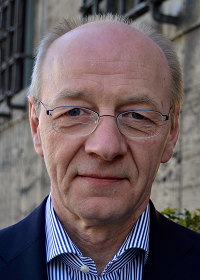Wondering what makes an ICT hotspot? Take a look at Munich, London, Paris or smaller cities such as Darmstadt identified in a new EU Atlas of ICT hotspots. This atlas shows where digital technologies thrive and examines the factors contributing to this success.
Most of Europe’s ICT activity takes place in 34 regions across 12 countries (listed in the Annex). Key ingredients to success included access to top Universities and research centres and funding opportunities such as venture capital.
European Commission Vice-President @NeelieKroesEU said: “This is proof that digital success comes through a willingness to invest, an open mindset for innovation and planning. Europe needs to build these values today to be a global leader in technology.”
Category Rankings
Computer Science graduates: the UK provides 8 out of the 10 top regions
Research and Patenting activity: Germany ranks first.
Employment Growth: Lisboa in Portugal and Rzeszowski in Poland are growing fastest
Venture capital: Munich, Paris and London attract the most capital.
You don’t have to be big to succeed!
The study also underlines the importance of smaller regions. For example, Darmstadt -a city of 150.000 people– building on its research innovative output and on its active business community, ranks number seven at EU’s top 10 ICT Poles of excellence. Other small-sized regions showing strong performance are Leuven, Karlsruhe or Cambridge.
Ingredients for digital success
A region’s ICT excellence is linked to research and development activities, to the ability to take knowledge to market (innovation) and to building an intense business activity around this innovation. It seems that ICT thriving regions:
- are mostly long standing industrial areas;
- have high-standard educational institutions and other key innovation players;
- have long-term policies on research and innovation;
- have enjoyed historical opportunities (such as being the political national capitals);
- tend to cluster together (half of the 34 Poles of excellence are neighbouring regions).
This effect is also observed in places like the Silicon Valley (USA), Bangalore (India) or Changzhou (China).
Background
This report addresses the EU Strategy to reinforce Europe’s industrial and technology leadership in ICT. The report findings and the Atlas will be used in future EU policy formulation on encouraging innovation in the EU. They will also feed into EURIPIDIS project, which focuses on ICT innovation policy and on transferring the best research ideas to the market. Moreover, the JRC plans to analyse the technological diversity of ICT activity and its evolution; this will help identify complementarities between locations.
A European ICT Pole of Excellence (EIPEs) is a geographical area inside the EU, with best performing activities in ICT production, RD and innovation, activities with a central role in global international networks.
The report looked at all EU regions (1303 NUTS3 regions) in terms of ICT activity and assigned scores according to its relative weight; 14% of the regions scored above 20 points. The top 34 scored between 41 and 100.
The report analysed three elements (business activity, RD and Innovation in the ICT sector) on the basis of their intensity (e.g. business turnover, turnover growth, number of employees), their internationalisation (e.g. how many international partners businesses/research centres/universities have) and networking (what is the role of each region in networks: which of them are hubs and connect directly to many partners, which of them have links that only allow few exchanges)
The findings relied on a Composite Indicator bringing together 42 Indicators to evaluate ICT activities. Several data sources and databases were used to elaborate the indicators and measurements: University rankings, citation indexes, information on European research projects’ collaborations, how many global top RD investor companies in ICTs are present in each region, venture capital funding or employment data and companies’ turn over information.
The European ICT Poles of Excellence (EIPE) Project is being developed by the Joint Research Centre and DG Connect.





